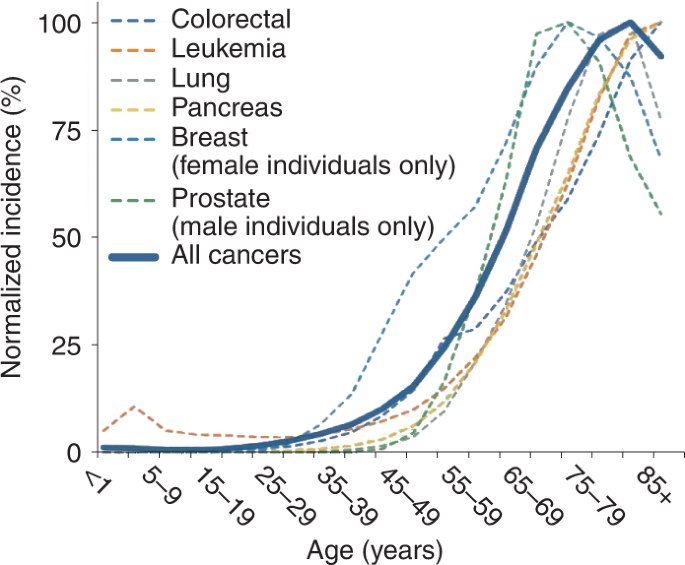Cancer Incidence Soars by Over 38-Fold from Young Adulthood to Senior Years, Driven by Accumulating Cellular Damage and Immune Decline

The escalating incidence of cancer with advancing age is a well-documented phenomenon, with rates climbing dramatically from young adulthood into senior years. This significant increase is primarily attributed to a complex interplay of biological factors, including the accumulation of cellular mutations and a decline in immune system efficacy. As Prof. Nikolai Slavov questioned on social media, ">Why does cancer incidence increase with age? Is it the accumulation of mutations? Is it a declining immune system? Are there other factors?", highlighting key areas of ongoing scientific inquiry.
Data from the National Cancer Institute's SEER Program reveals a stark rise in cancer diagnoses, from fewer than 26 cases per 100,000 individuals under age 20 to over 1,000 per 100,000 in those aged 60 and older, representing a more than 38-fold increase. This trend underscores age as the most critical risk factor for most cancer types. The median age for a cancer diagnosis stands at 67 years, with over half of all cancer cases occurring in individuals aged 65 or older, according to 2022 GLOBOCAN data.
A primary mechanism contributing to this age-related rise is the progressive accumulation of genetic mutations and DNA damage within cells over time. As individuals age, their cells are exposed to various internal and external carcinogens, leading to a build-up of genetic alterations. Concurrently, the body's cellular repair mechanisms become less efficient, allowing damaged cells to persist and potentially develop into malignant tumors.
Furthermore, the immune system undergoes a process known as immunosenescence, becoming less robust and effective with age. This diminished capacity impairs its ability to identify and eliminate abnormal or pre-cancerous cells, which would otherwise be eradicated in a younger, more vigorous immune environment. This declining immune surveillance creates a more permissive environment for tumor initiation and progression.
Beyond mutations and immune decline, other age-related biological changes contribute to increased cancer risk. These include chronic inflammation, often referred to as "inflamm-aging," and epigenetic alterations that disrupt normal gene expression patterns. Changes in the tissue microenvironment, such as increased fibrosis and altered extracellular matrix components, also create conditions favorable for tumor growth and metastasis.
These multifaceted age-associated factors support predictive models of cancer rates, as noted by Prof. Slavov, who stated, ">Both mutation accumulation and immune system decline correlate with age and support predictive models of cancer rates." Understanding these intricate connections is crucial for developing targeted prevention strategies and more effective treatments for an aging global population. Research continues to explore these biological hallmarks to mitigate cancer's impact in later life.